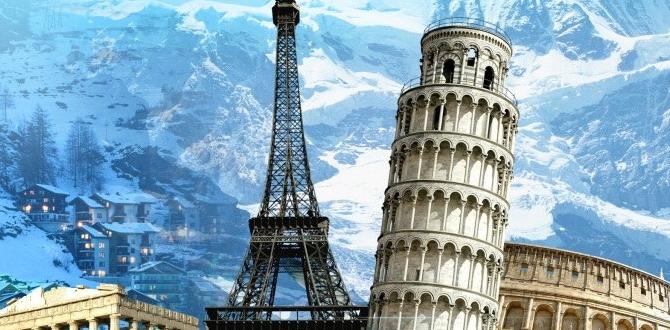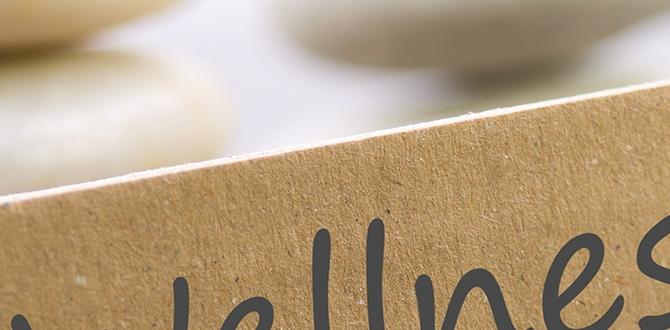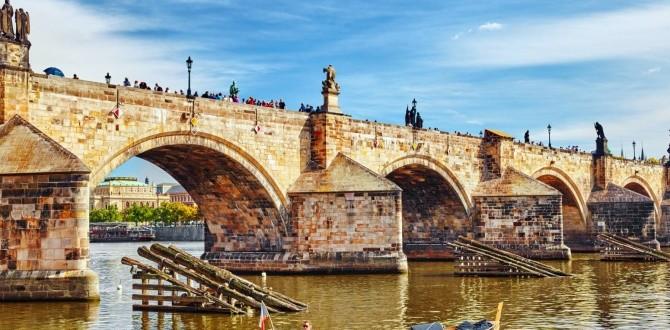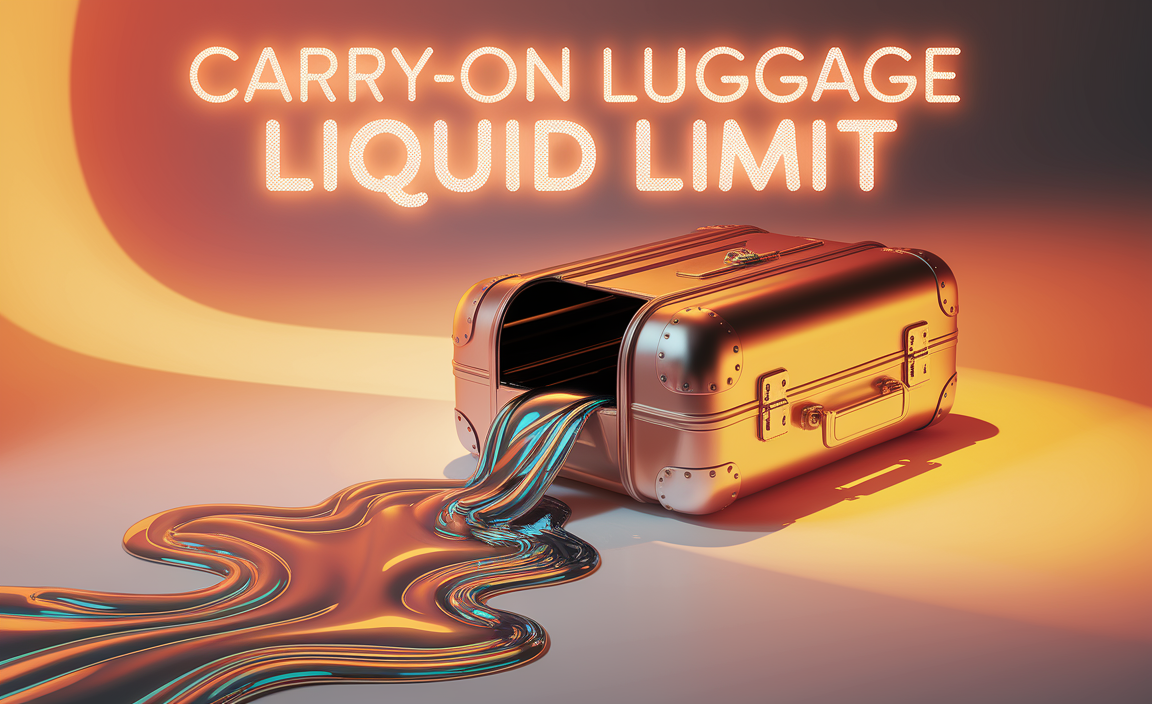Don’t let the Atacama Desert’s stark beauty intimidate you! With these genius safety tips, you can explore this incredible landscape confidently, avoiding common mistakes and potential scams for a truly unforgettable adventure.
The Atacama Desert is a dream destination for many, boasting otherworldly landscapes, incredible stargazing, and unique geological wonders. Yet, its extreme environment means a little preparation goes a long way. It’s easy to feel a bit overwhelmed when planning a trip to such a remote and arid place. You might worry about the intense sun, the dry air, or even getting lost. But don’t let that stop you!
This guide is packed with straightforward, practical advice to ensure your journey through the Atacama is not only safe but also incredibly enjoyable. We’ll cover everything you need to know, from packing essentials to staying healthy and avoiding common pitfalls. Get ready to explore the Atacama like a pro!
Why Atacama Desert Safety Is Crucial
The Atacama Desert is renowned as the driest non-polar desert on Earth, a title that hints at its unique and challenging environment. While its stark beauty and vast panoramas are breathtaking, this extreme aridity and elevation present specific safety considerations for travelers. Understanding these factors is the first step towards a safe and rewarding adventure.
The desert’s remoteness means access to immediate medical help can be limited. Furthermore, the intense solar radiation at high altitudes can lead to severe sunburn and heatstroke if not properly managed. Altitude sickness is also a common concern, especially for visitors arriving from sea level.
Beyond environmental factors, being aware of common tourist scams and making informed choices about tours and accommodation is vital to prevent disappointment and financial loss. By prioritizing your safety and being well-informed, you can fully immerse yourself in the magic of the Atacama.
Essential Atacama Desert Safety Tips
Embarking on an Atacama adventure requires thoughtful preparation to ensure comfort and well-being. Here are the genius tips to keep you safe and sound as you explore this mesmerizing landscape.
1. Hydration is Your Superpower
This is the golden rule of the Atacama. The arid climate means you lose moisture rapidly, even if you don’t feel thirsty. Dehydration can sneak up on you, leading to headaches, fatigue, and more serious health issues. Make it a habit to drink water constantly, even before you feel parched.
- Carry ample water: Always have more water than you think you’ll need. For day trips, aim for at least 3-4 liters per person.
- Electrolytes are key: Supplement plain water with electrolyte drinks or powders. These help your body retain fluids and replenish lost salts.
- Avoid dehydrating drinks: Limit alcohol and caffeine, as they can contribute to fluid loss.
- Snack wisely: Pack fruits and vegetables with high water content, like cucumbers, watermelon, and oranges, to boost your intake.
2. Sun Protection: Your Shield Against the Desert Sun
The Atacama sun is incredibly intense, especially at high altitudes. The thin atmosphere offers little protection, meaning sunburn can happen quickly and severely. Protecting your skin and eyes is non-negotiable.
- High SPF sunscreen: Use a broad-spectrum sunscreen with an SPF of 30 or higher and reapply frequently, especially after sweating or swimming.
- Protective clothing: Wear long-sleeved shirts, long pants, and wide-brimmed hats to cover exposed skin. Light-colored, breathable fabrics are best.
- Sunglasses: Invest in sunglasses that offer UV protection to shield your eyes from harsh rays.
- Lip balm with SPF: Don’t forget your lips! A lip balm with SPF will prevent painful sunburn.
3. Conquer Altitude Sickness
Many popular Atacama attractions, like the El Tatio geysers, are located at high altitudes (often over 4,000 meters or 13,000 feet). Altitude sickness, or Acute Mountain Sickness (AMS), can affect anyone, regardless of fitness level. Symptoms include headaches, nausea, dizziness, and fatigue.
- Acclimatize gradually: Spend a day or two in San Pedro de Atacama (around 2,400 meters) before heading to higher elevations if possible.
- Take it easy: On your first day at high altitude, avoid strenuous activity and large meals.
- Stay hydrated: As mentioned, drinking plenty of water is crucial for acclimatization.
- Avoid alcohol and smoking: These can worsen altitude sickness symptoms.
- Consider medication: Consult your doctor about prescription medications like Diamox (acetazolamide) which can help prevent or treat AMS. You can find more information on altitude illness prevention from reputable sources like the Centers for Disease Control and Prevention (CDC).
4. Dress in Layers for Temperature Swings
The Atacama experiences dramatic temperature fluctuations. Days can be scorching hot, while nights can become surprisingly cold, especially at higher elevations. Layering your clothing is the most effective way to stay comfortable.
Start with a moisture-wicking base layer, add an insulating layer (like fleece), and top it off with a windproof and water-resistant outer shell. This allows you to easily adjust your clothing to match the changing conditions throughout the day.
5. Footwear: Sturdy and Comfortable
You’ll be doing a lot of walking and hiking on uneven terrain. Comfortable, supportive footwear is essential for preventing blisters and ensuring stability.
- Hiking boots: Well-broken-in hiking boots with good ankle support are ideal for exploring rocky trails and uneven surfaces.
- Comfortable walking shoes: For less strenuous activities or around town, sturdy walking shoes are a good option.
- Socks: Pack moisture-wicking socks made of wool or synthetic materials to keep your feet dry and prevent chafing.
6. Travel with Confidence: Essential Gear and Packing
Beyond clothing, a few key items can enhance your safety and comfort significantly. Think about what you might need in a pinch, especially when you’re far from amenities.
- First-aid kit: Pack a comprehensive kit with bandages, antiseptic wipes, pain relievers, blister treatment, and any personal medications.
- Headlamp or flashlight: Many activities, like stargazing tours or exploring geyser fields at dawn, require good lighting.
- Power bank: Ensure your phone and camera are always charged for navigation, photos, and emergencies.
- Insect repellent: While not as common as in humid regions, some areas might have biting insects, particularly around oases or at dusk.
- Hand sanitizer: Crucial for maintaining hygiene when access to soap and water is limited.
7. Navigating Tours and Avoiding Scams
San Pedro de Atacama is a tourist hub, and while most operators are reputable, it’s wise to be aware of potential scams and common mistakes. Choosing trustworthy tour operators and understanding what’s included in your package can save you headaches and money.
Common Scams and Mistakes to Watch Out For:
While the scams in the Atacama are generally less aggressive than in other parts of the world, being informed is always best. The most common issue is simply overpaying for subpar tours or being misled about what’s included.
- Price Comparisons: Always compare prices for similar tours from different agencies in San Pedro de Atacama. Don’t book with the first vendor you see.
- Hidden Fees: Clarify exactly what your tour price includes. Are park entrance fees, meals, or hotel pick-ups included? Sometimes these are extra.
- “Too Good to Be True” Deals: Be wary of extremely cheap “all-inclusive” packages that seem significantly lower than others. They might cut corners on safety or quality.
- Unqualified Guides: Ensure your guides are knowledgeable and licensed, especially for activities that involve trekking or exploring remote areas.
- Not Checking Reviews: Before booking, quickly check online reviews for tour agencies. This is a great way to gauge their reputation for safety and customer satisfaction.
Tips for Choosing a Reputable Tour Operator:
- Book through your accommodation: Hotels and hostels often work with vetted operators.
- Look for established agencies: Agencies with a physical presence in San Pedro and a good number of reviews are usually reliable.
- Ask for details: Don’t hesitate to ask questions about the itinerary, safety equipment, guide qualifications, and insurance.
- Trust your gut: If something feels off about a vendor or a deal, it’s probably best to look elsewhere.
8. Stay Connected (or Disconnected) Wisely
Cell service can be spotty in the Atacama, particularly outside of San Pedro de Atacama. While this can be a great opportunity to disconnect, it’s important to have a plan for staying in touch if needed.
- Inform someone of your itinerary: Before setting off on any excursions, let your accommodation or a friend/family member know your plans and expected return time.
- Download offline maps: Use apps like Google Maps or Maps.me to download maps of the area so you can navigate even without a signal.
- Emergency contacts: Save emergency numbers in your phone, and consider writing them down on a piece of paper as a backup.
9. Respect the Environment and Local Culture
The Atacama Desert is a delicate ecosystem and home to indigenous cultures. Traveling responsibly ensures its preservation for future generations and fosters positive interactions.
- Leave No Trace: Pack out everything you pack in. Avoid littering and disturbing wildlife.
- Stay on marked trails: This protects fragile desert vegetation and prevents you from straying into dangerous areas.
- Respect cultural sites: Many archaeological and cultural sites are protected. Follow guidelines and do not touch or remove artifacts.
- Ask before photographing: If you plan to photograph local people, always ask for permission first.
10. Health and Hygiene in the Desert
Maintaining good health is paramount, especially in a remote environment. Beyond hydration and sun protection, general hygiene practices are crucial.
- Handwashing: Wash your hands frequently, especially before eating.
- Food safety: Stick to reputable restaurants and food stalls. When in doubt, opt for cooked meals.
- Personal care: Consider travel-friendly adult diapers or child diapers if you have specific personal care needs that require extra discretion or protection during long journeys or remote excursions, ensuring comfort and dignity. Many modern options are highly absorbent and discreet, perfect for keeping you dry and confident throughout your travel day.
Factors Affecting Your Atacama Safety
Several environmental and logistical factors can influence your safety in the Atacama. Understanding these can help you prepare even better.
| Factor | Impact on Safety | Mitigation Strategies |
|---|---|---|
| Extreme Aridity | Rapid dehydration, dry skin and eyes, chapped lips. | Constant hydration, moisturizers, sunglasses, lip balm with SPF. |
| High Altitude | Altitude sickness (AMS), headaches, nausea, dizziness. | Gradual acclimatization, rest, hydration, medical consultation for medication. |
| Intense Solar Radiation | Severe sunburn, heatstroke, eye damage. | High SPF sunscreen, protective clothing, hats, sunglasses, seek shade. |
| Remoteness | Limited access to medical facilities and emergency services. | Carry a comprehensive first-aid kit, inform others of your itinerary, have a reliable communication plan. |
| Temperature Fluctuations | Discomfort, increased risk of cold-related issues at night. | Layered clothing, warm outerwear for evenings and early mornings. |
| Uneven Terrain | Risk of slips, trips, and sprains. | Sturdy, well-fitting footwear with good grip and ankle support. |
Conclusion
The Atacama Desert is a destination that offers unparalleled natural beauty and unique experiences. By embracing these essential safety tips – prioritizing hydration, diligent sun protection, understanding altitude risks, and choosing reputable tour operators – you’re setting yourself up for a smooth and unforgettable journey.
Remember to pack smart, stay informed about your surroundings, and always respect the fragile desert environment and its culture. With a little preparation and awareness, your Atacama adventure will be filled with wonder, not worry. Safe travels!
Frequently Asked Questions
Q1: What is the biggest safety concern in the Atacama Desert?
A1: The biggest safety concerns are dehydration due to the extreme arid climate and altitude sickness, especially when visiting higher-elevation attractions. Intense sun exposure is also a significant risk.
Q2: Do I need to worry about wild animals in the Atacama?
A2: Generally, wild animals are not a major concern for tourists in the main Atacama tourist areas. You might see vicuñas, llamas, or vizcachas from a distance, but they are typically not aggressive. Avoid approaching or feeding them.
Q3: Is it safe to travel alone in the Atacama Desert?
A3: Yes, it is generally safe to travel alone, especially in and around San Pedro de Atacama. However, like anywhere, exercise common sense precautions. If venturing on solo hikes or to remote areas, always inform someone of your itinerary, stay on marked paths, and carry adequate supplies.
Q4: What should I do if I start feeling symptoms of altitude sickness?
A4: If you experience altitude sickness symptoms, the best immediate action is to descend to a lower altitude if possible. Rest, drink plenty of water, and avoid strenuous activity and alcohol. If symptoms are severe or don’t improve, seek medical attention.
Q5: Are there medical facilities available in the Atacama Desert?
A5: San Pedro de Atacama has a small hospital or clinic that can handle basic medical issues. For more serious emergencies, evacuation to a larger city like Calama or Antofagasta might be necessary. It’s advisable to have travel insurance that covers medical evacuation.
Q6: Can I drink the tap water in San Pedro de Atacama?
A6: It is generally recommended not to drink tap water in San Pedro de Atacama. While locals may drink it, it may not be suitable for visitors and can cause stomach upset. It’s safer to drink bottled or purified water.
Q7: Is it safe to drive in the Atacama Desert?
A7: Driving in the Atacama can be challenging. Roads can be unpaved, dusty, and some areas require a 4×4 vehicle. If you rent a car, ensure it’s suitable for the terrain, check conditions before you go, and always have GPS, plenty of water, and a full tank of fuel.




